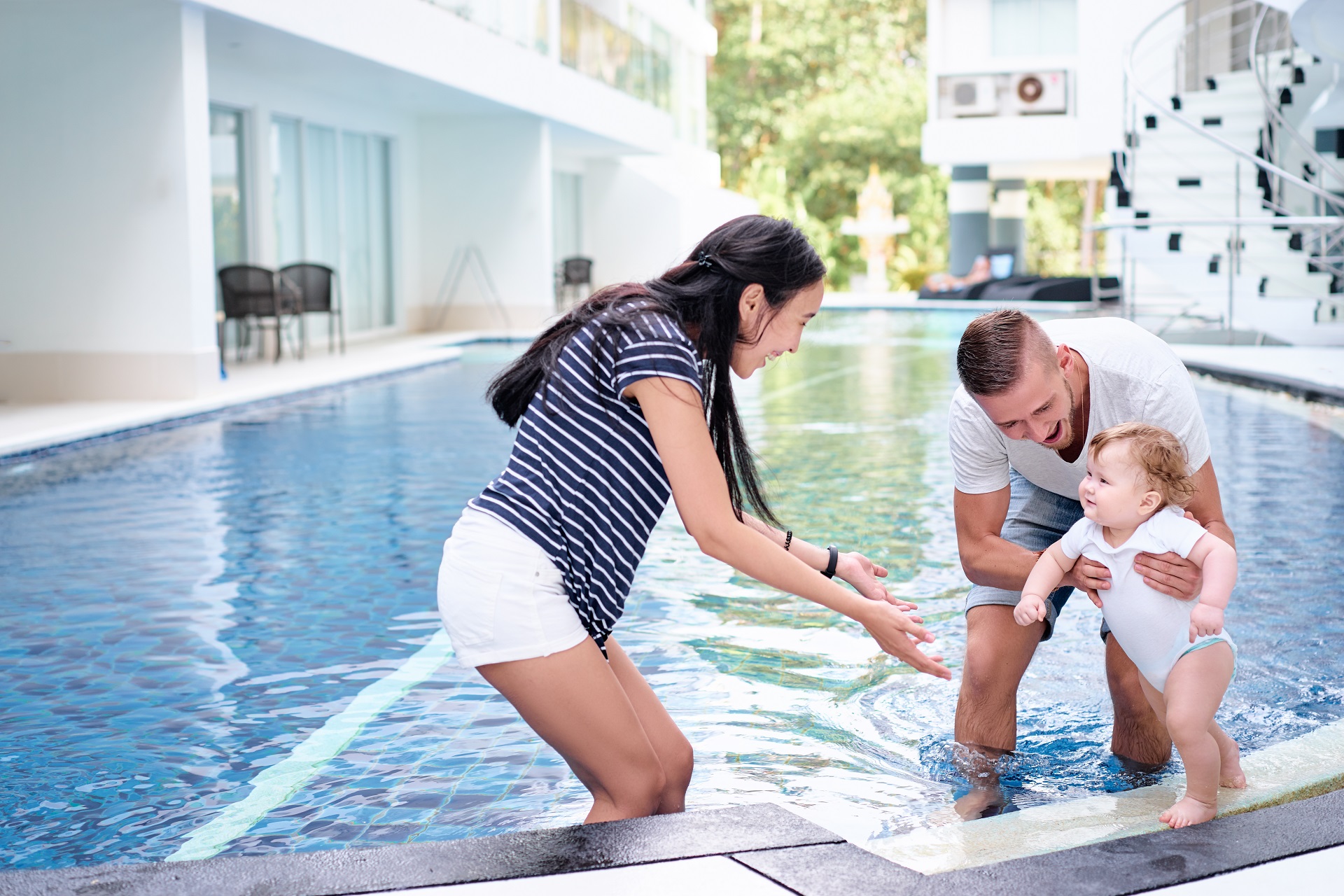Condo associations face a myriad of challenges when it comes to maintaining shared spaces within their communities. At the heart of these efforts is the management of common areas - spaces shared by all residents. These locations significantly impact the overall living experience and property value. For condo association board members, understanding the best practices in the maintenance and administration of these spaces can be essential.
From common area maintenance to effective communication strategies, the management process is sufficiently challenging. In this blog post, we will look into the essential protocols and principles for managing common areas in condo communities. We'll explore best practices for maintenance, optimization of common area usage, and how to give your tenants the best support.
What Are Condo Association Common Areas?
Common areas in a condominium association are the spaces and facilities shared by all residents. The association is responsible for maintaining these spaces, justified by their HOA fees. These areas are integral to the community's functionality and aesthetics, contributing to the overall quality of life for the residents.

Properly managed common areas can enhance property values, foster a sense of community, and ensure a safe and pleasant environment. Below are three common types of common areas typically found in condominium associations:
General Common Elements
General common elements include the areas and facilities that are available for use by all residents of the condominium. These typically encompass lobbies, hallways, stairwells, elevators, gardens, swimming pools, fitness centers, and parking lots. The management of these areas involves routine maintenance, cleaning, and ensuring safety measures are in place.
Limited Common Elements
Limited common elements are parts of the property designated for the exclusive use of one or a few units. Even then, these spaces are still maintained by the condo association. Examples include balconies, patios, or parking spaces assigned to specific units. While these areas are reserved for certain residents, their maintenance remains the responsibility of the association to ensure uniform standards.
Exclusive Common Elements
Exclusive common elements are unique to certain properties and are typically assigned to specific units. These include the actual homes and the unit’s balcony, private rooftop terraces, or designated storage areas. Unlike general and limited common elements, the maintenance of exclusive common elements falls on the individual owners to whom these elements are assigned.
Best Practices for Common Area Maintenance
Maintenance of common areas in condo communities is a critical aspect of ensuring the overall well-being and satisfaction of residents. By implementing specific protocols and best practices, condo associations can effectively manage and upkeep these shared spaces. Here are some key strategies for efficient common area maintenance:
Regular Inspections:
- Conduct routine inspections of common areas to identify maintenance needs promptly.
- Addressing issues early can prevent them from escalating into more significant problems, ultimately saving time and resources.
Cleaning Schedules:
- Establishing regular cleaning schedules for common areas, including lobbies, hallways, and recreational facilities, is essential for upholding hygiene standards.
- Consistent cleaning not only enhances the aesthetic appeal of the community but also contributes to a healthier living environment for residents.
Landscaping Guidelines:
- Implementing landscaping guidelines and maintenance schedules for outdoor common areas is crucial for preserving the visual appeal of the community.
- Well-maintained landscaping enhances curb appeal, contributing to the overall value of the property and fostering a pleasant living environment for residents.
Condo Association Common Area Usage Guidelines
Enhancing the usage of common areas within condo communities goes beyond mere maintenance; it involves fostering a vibrant and engaging environment for residents. Here are key strategies for optimizing common area usage:
- Hours of Operation: Specify the hours during which common areas such as pools, gyms, and community rooms are available for use. This helps minimize disturbances and allows for cleaning and maintenance.
- Reservation Procedures: Outline the process for reserving spaces like community rooms or BBQ areas. Clarify details, including any required deposits, advance notice, and maximum usage time.
- Capacity Limits: Establish maximum occupancy limits for common areas to ensure safety and comfort.
- Noise Levels: Enforce noise restrictions in common areas to maintain a peaceful environment.
- Cleanliness and Maintenance: Encourage residents to clean up after themselves and report any maintenance issues to the condo association promptly.
- Guest Policies: Define rules for hosting guests in common areas, including the number of guests allowed per unit. Set rules on restrictions on guest use of certain amenities.
- Behavioral Standards: Set expectations for appropriate behavior in common areas, prohibiting activities that could damage property or disturb other residents, such as smoking, vandalism, or inappropriate conduct.
- Pet Guidelines: Establish rules for pets in common areas, including leash requirements, designated pet relief areas, and cleanup responsibilities for pet owners.
- Safety and Security: Implement safety guidelines for the use of amenities like pools and gyms, including the use of safety equipment and adherence to posted rules and instructions.
By adhering to these guidelines, condo associations can ensure that common areas are used in a way that promotes safety, respect, and enjoyment for all residents.

Effective Communication Strategies for Common Areas
Effective communication is crucial for ensuring that all residents are informed about the use, maintenance, and policies regarding common areas in a condominium association. Here are some strategies to enhance communication:
Regular Updates and Notices
- Newsletters: Distribute monthly or quarterly newsletters to keep residents informed about upcoming events, maintenance schedules, rule changes, and other important updates related to common areas.
- Bulletin Boards: Install bulletin boards in high-traffic areas such as lobbies and mailrooms to post notices, reminders, and announcements about common areas.
Digital Communication Tools
- Email Blasts: Send regular email updates to residents to provide timely information about common area policies, scheduled maintenance, and community events.
- Community Website or Portal: Maintain a dedicated website or online portal where residents can access important documents, submit maintenance requests, reserve common areas, and stay updated on association news.
- Social Media: Utilize social media platforms to engage with residents, share updates, and foster a sense of community. Private groups on platforms like Facebook can facilitate discussions and provide a space for quick updates.
Clear Signage
- Informational Signs: Place clear and informative signs in common areas to communicate rules, hours of operation, safety guidelines, and any other relevant information. Ensure signs are visible and easily understandable.
- Directional Signs: Use directional signage to guide residents and visitors to different common areas, making navigation easier and enhancing the overall user experience.
Residential Meetings
- Regular Meetings: Hold regular meetings where residents can voice concerns, ask questions, and receive updates about common areas. Encourage participation to foster a collaborative environment.
- Special Forums: Organize forums or town hall meetings specifically focused on common area issues, allowing for in-depth discussion and community input.
Feedback Mechanisms
- Surveys: Conduct regular surveys to gather resident feedback on the use and condition of common areas, as well as suggestions for improvements. Use this feedback to inform decisions and policy changes.
- Suggestion Boxes: Place suggestion boxes in common areas where residents can anonymously submit their ideas, concerns, or feedback.
Emergency Communication
- Alert Systems: Implement an emergency alert system, such as text messaging or phone calls, to quickly communicate urgent information related to common area safety or unexpected maintenance issues.
- Emergency Contact Information: Ensure all residents have access to emergency contact information for reporting issues or concerns related to common areas.
By employing these effective communication strategies, condo associations can keep residents well-informed, foster a sense of community, and ensure the smooth and efficient management of common areas.
Find Topnotch Facility Support For Your Condo Association
Effectively managing common areas is essential for maintaining the value of a condominium community. Adhering to best practices in maintenance, usage guidelines, and strong communication strategies can help condo associations ensure these shared spaces remain welcoming and functional for all residents. If you want the best for your facilities, partner up with a professional condo association management service. Find a team that can provide the expertise and support needed to maintain and improve your common areas. Talk to us now and see how we can streamline everything for you.


